It’s not surprising when a machine shop ventures into new industries and markets. But it’s a bit different in W.H. Bagshaw’s case.
Since 1870, W.H. Bagshaw has manufactured billions upon billions of precise, metal pins and related components for countless industries and applications. In a bit of a departure, it started Walter Bat Co. in early 2021 to create wooden bats that can be customized for Little Leaguers through professional Major League Baseball players. The two companies are located in the same 100,000-square-foot building in Nashua, New Hampshire, as is a recently added baseball training facility located one level above the manufacturing shop floor.
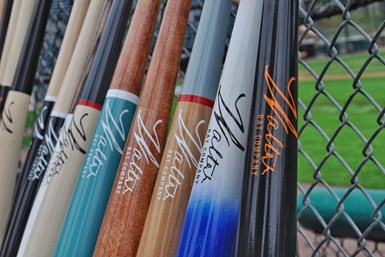
Walter Bat Co. customers can choose color, size and graphics in creating their own personalized bats. (Photo Credit: Walter Bat Co.)
The company Walter Henry Bagshaw founded in Lowell, Massachusetts, is now run by his great-great-grandson, Aaron Bagshaw (president) and his wife Adria (vice president). I sat down with both of them as well as Patrick Harvey, manager of operations for Walter Bat Co., to learn about the how’s and why’s of creating what I call its bat-making “side hustle,” how the two companies complement each other, and how this new endeavor has helped create a stronger bond with the local community. Here, I paraphrase some of what we talked about, but you can also watch this video where they tell their story.
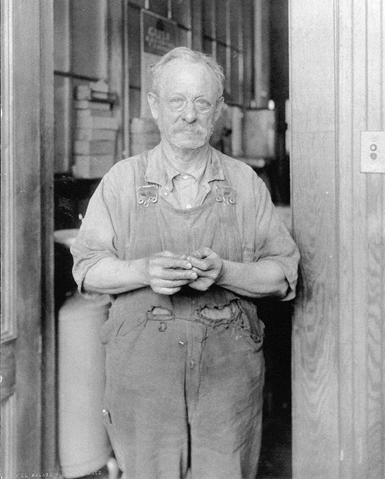
Walter Henry Bagshaw created his company in 1870 initially to create pointed pins for the textile industry. (Photo Credit: Walter Bat Co.)
How did W.H. Bagshaw get its start?
Aaron: The textile industry was strong in Lowell, Massachusetts, when Walter started the company 153 years ago, so it was primarily producing pointed pins for that type of equipment. Sometime later, W.H. Bagshaw also began manufacturing phonograph needles. In fact, in 1919, we received an order for 1.75 billion phonograph needles. Today, we use legacy, mechanical equipment for a few select operations as well as 30 CNC Swiss-type lathes that produce other types of complex parts from barstock. We’ve recently added larger turning capacity with a Puma TT2100 SYYB twin-turret/twin-spindle lathe with Y-axis from DN Solutions being that a few customers have asked us to make parts larger than our biggest 32-mm Swiss-types can produce.
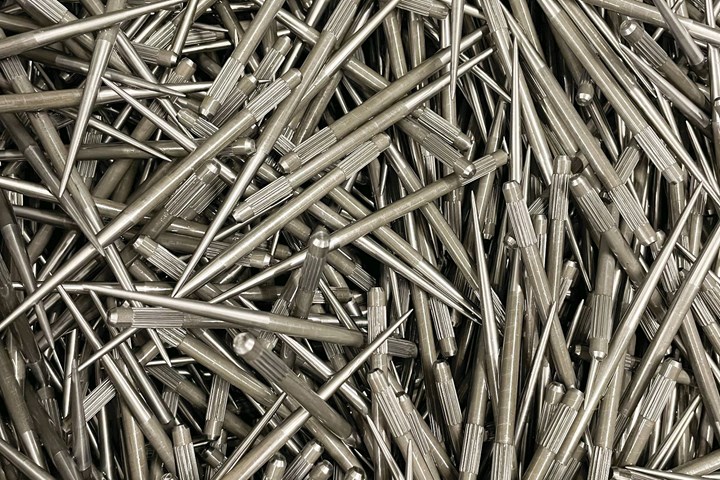
For 153 years, W.H. Bagshaw has created billions of pins for myriad applications and industries. (Photo Credit: PM)
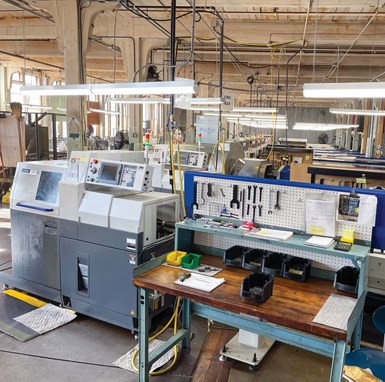
W.H. Bagshaw has legacy, mechanical equipment as well as 30 CNC Swiss-type lathes. (Photo Credit: PM)
What spurred the idea to create Walter Bat Co.?
Adria: When our son, Kyan, was in high school, he was working with a pitching coach who was making wooden baseball bats in his garage. The coach was looking to wind down that business and focus on coaching, so he asked if we’d be interested in purchasing the lathe he used to create his bats. We had no interest in that, per se, but it did spark the idea of getting into the bat-making business, given we had the infrastructure and the passion for it. So, we purchased his company. (Kyan now attends Endicott College in Beverly, Massachusetts, and is a pitcher on the school’s baseball team.)
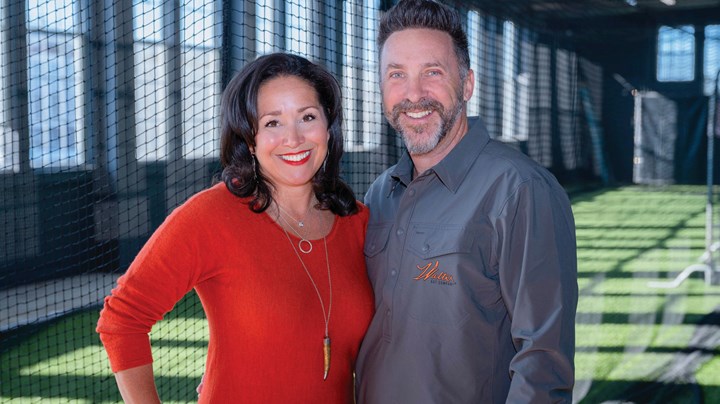
Adria and Aaron Bagshaw shown here in their baseball training facility, now run both W.H. Bagshaw as well as Walter Bat Co. (Photo Credit: PM)
Aaron: We felt this was a unique opportunity for us, given bat production is certainly in our turning wheelhouse. But, it’s also what captures the heart of who we are as a family; our energy and identity. In addition, it gives us the opportunity to create and shape a business from the ground up that perhaps Kyan and/or our daughter, Maya, might have interest in down the line.
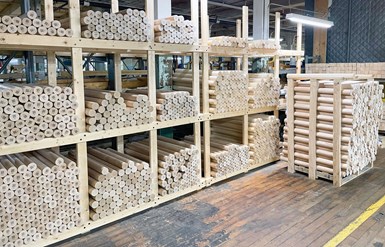
Walter Bat Co. maintains a large inventory of wood billets. Customers can choose ash, birch and maple when creating their bats. (Photo Credit: PM)
What’s involved in creating a custom baseball bat?
Patrick: When a person is considering a bat, he or she specifies the model, type of wood (ash, birch or maple), length and weight, paint or stain color as well as custom graphics that can be laser-etched into the barrel of a bat. Only wooden billets with a very straight grain are used to create professional-grade bats, while others are better suited for trophy bats used for display only.
The billet is then turned on the lathe. That said, the lathe that came with the company we purchased required multiple passes of essentially a sawblade to complete a bat profile in 15 minutes. Plus, because of the subpar finish it left behind, a subsequent 30-minute hand-sanding operation was required. That’s why we recently added a new TC650E MotionCat CNC lathe from CNC Auto-Motion, which is well known in the professional bat-making industry. This produces the bat profile in one pass in 3 minutes using cutting tool inserts from Iscar, and hand sanding now takes only 3 minutes.
After turning and sanding, the bats are painted or stained and then laser etched with bat specifications or whatever custom graphics the customer might want.
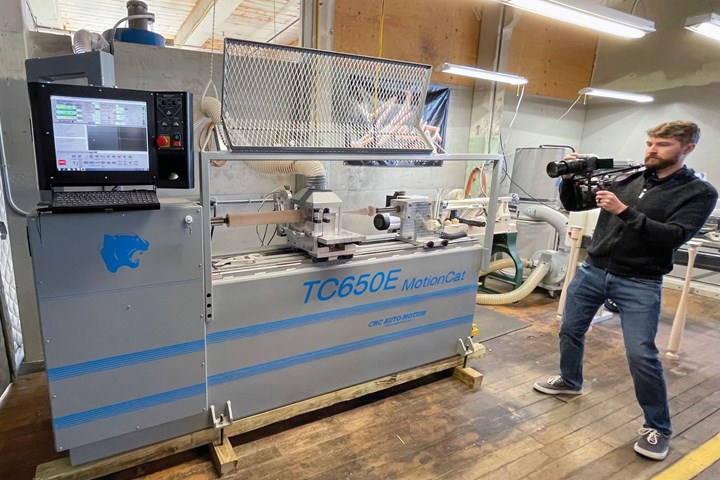
This CNC lathe can turn a bat profile in one pass in 3 minutes, leaving behind a surface finish that requires only 3 minutes of subsequent hand sanding. Be sure to watch the video we produced telling the Walter Bat Co. story. (Photo Credit: PM)
Why did you create a baseball training facility?
Adria: When we started producing bats, we had a small batting cage area on the second floor. We felt that if we can have people come to this area to try some of our bats and generally be introduced to the Walter Bat Co., why not take advantage of that and create a full training facility that not only includes batting cages but training area with weights and other strength and conditioning equipment? We held a grand opening of the training facility in November 2022.
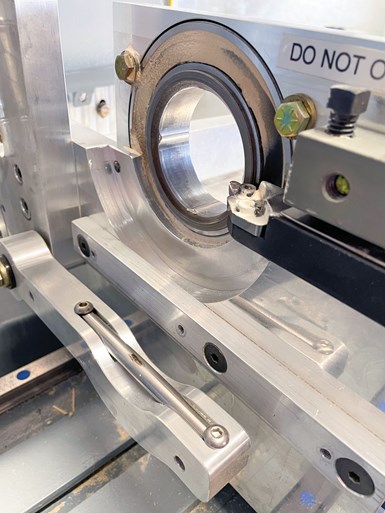
The CNC lathe features a bushing to help support the billet during turning. The leading cutting tool insert shown here turns the billet to the proper size for the bushing, and inserts on the other side of the bushing turn the actual bat profile. (Photo Credit: PM)
Patrick: Because we’re a small company, we can build closer relationships with our customers. That way, we can spend more time designing a model specific to their needs and swing. The training center has a high-speed camera and radar gun to analyze an athlete’s swing and determine the exit velocity of a baseball off the bat, trajectory, spin rate and so on. From there, we can better determine which model and weight of bat is most conducive to their swing. Being a small company affords us this type of one-on-one time to determine the optimal bat. In the case of one minor league baseball player, the bat we designed provided 4-mph higher exit velocity (the speed of the ball after being hit) than his existing bat largely due to the material and handle design modifications.
Why is it valuable having the training center and pin and bat production under one roof?
Aaron: We, like other machine shops, struggle with figuring out how to get people turned on to manufacturing. That’s always part of the conversation with peers that we might interact with at trade shows or at a Precision Machined Products Association (PMPA) event. (W.H. Bagshaw is a PMPA member.) With our facility layout, parents and their children have to walk through a portion of the pin manufacturing area to get to the 5,000-square-foot bat production area. As a result, someone might ask about the W.H. Bagshaw business and equipment used there. That could open a conversation about what a Swiss-type lathe is, for example. Just the ability to have that sort of talk with a parent could change the trajectory of a student’s life.
Adria: We’ve always been welcoming to anyone in the community who wants to come in and see the W.H. Bagshaw business, but admittedly haven’t seen a lot of interest in that. However, we have seen interest in people wanting to see the bat production area which affords us the opportunity to explain the same way you load a wooden billet for a bat into a CNC lathe you can load metal bar stock into a Swiss-type, and then talk about what products that material can be turned into and for what essential purposes. That facilitates a conversation with parents and students about what types of manufacturing careers might be available to them.
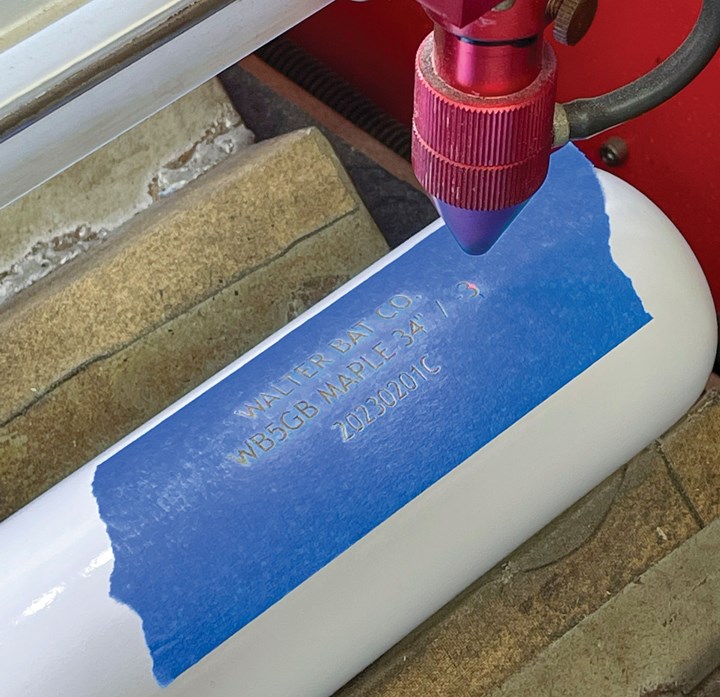
A laser is used to etch logos and bat specifications after turning and painting or staining. (Photo Credit: PM)
What are your goals with Walter Bat Co. moving forward?
Aaron: It would be great to see more high school and collegiate athletes — and perhaps even Major League Baseball players — swinging our bats. But, we want this company to grow organically. So, we’re not chasing those sales, but instead would hope people will find us through our training facility, website or social media channels, and identify with us. If they do identify with who we are, what we’re trying to create here and what we’re doing in this community, then that’s a big win.
Adria: Whenever we’re at a crossroads, we do two things. One is we think about the resources that are available to us, such as our local small business development center and the PMPA. But we also stop and think, what would, as our guiding force, Walter Henry Bagshaw think about what we’ve done establishing Walter Bat Co. Per the latter, we know he would appreciate the entrepreneurial spirit in creating it, so that reinforced the notion that we’re honoring past generations with entrepreneurship, creativity, mentorship and doing something new and different for our community.
Related Content
5-Axis Machining Centers Transform Medical Swiss Shop
Traditionally a Swiss machine shop, Swiss Precision Machining Inc. discovers a five-axis machining center that has led the company to substantial growth. (Includes video.)
Read MoreGetting More Production From Swiss Turning Centers
Buying a new CNC Swiss turning center is a substantial investment. For the best return, look closely for capabilities that enable the best utilization of the machine.
Read MoreLaser Technology "Turns" into a Turning Tool
This new technology uses a laser to act as a cutting tool to "turn" parts from solid barstock. This high-speed precision turning machine is especially useful for micromachining, enabling high accuracy for small, complex parts that are often delicate and difficult to machine when implementing conventional turning processes.
Read MoreShop Optimizes its Swiss-Turning Flexibility
Paramount Machine uses various Swiss-type lathes, some with a B axis, to produce parts more effectively than it did on conventional chucker lathes. Today, nearly every job under 1.5 inches in diameter runs across those machines even if the batch size is a mere 5 pieces.
Read MoreRead Next
5 Aspects of PMTS I Appreciate
The three-day edition of the 2025 Precision Machining Technology Show kicks off at the start of April. I’ll be there, and here are some reasons why.
Read MoreA Tooling Workshop Worth a Visit
Marubeni Citizen-Cincom’s tooling and accessory workshop offers a chance to learn more about ancillary devices that can boost machining efficiency and capability.
Read MoreDo You Have Single Points of Failure?
Plans need to be in place before a catastrophic event occurs.
Read More








.jpg;maxWidth=300;quality=90)














